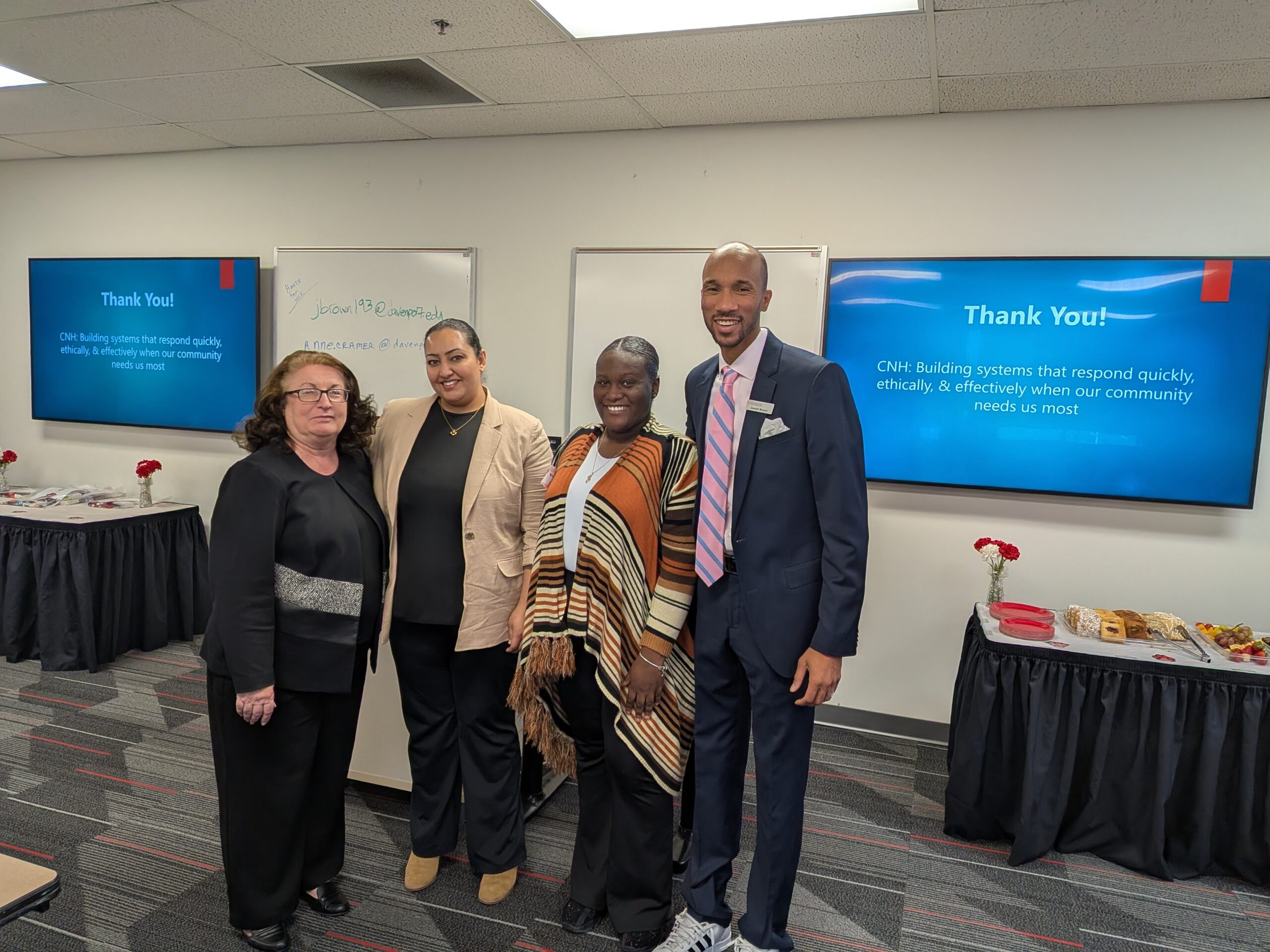In every aspect of life, obstacles can occur that prevent you from doing things the “normal” way. Choosing a college can be nerve-wracking since it’s such a big decision. There are so many options to choose from and things like distance, expenses and now COVID-19 can make it difficult to visit campuses in person. Because of these challenges, you may have to take a different approach to finding your best-fit college than you originally envisioned. It may be hard to feel confident that you’ll make the right choice if you can’t visit a school in person but it CAN be done! There are many ways to get the information you need to make a solid decision. Read on for our tips.
After you’ve narrowed down your choices to the schools that have the programs you’re interested in and accommodate your preferred style of learning (e.g., large lecture, hands-on, online), here are five ways to ensure you find the right fit from anywhere.
1. Talk to the admissions representative — not just once, but whenever you have a question. Don’t worry about bothering them. They love the school they work for and want to tell you about it. They can give you a great overview of the school, and help you connect with other people such as professors, coaches and leaders of student organizations you might be interested in. (Yes, talk to them, too!)
By the way, you can tell a lot about an institution by how accessible and responsive your admissions rep is. “If an admissions person is blowing you off,” says Erica Potter, Senior Student Ambassador at Davenport University, it may be an indication that as a new student, “you’ll have to find things for yourself. No one will guide you.”
2. Take a virtual tour of the campus. Some colleges already have online versions of their in-person tours, and most are working on creating them. Some offer online events instead. For example, Davenport University offers “Panther Preview,” which gives an overview of things like financial aid, student life and “all the things upperclassmen say they wish they would have known about and used as freshmen,” says Erica Potter. Things like tutoring, writing labs and on-campus employment opportunities can be easy to overlook with the excitement of your first year in college but many upperclassmen will tell you that these services are invaluable.
3. Get an insider look by checking out the lives of current students. One way to do this is by using social media. Go beyond the university’s main account. Check out hashtags, sports teams and even student profiles. Even better, find out what hashtag the students use for popular campus events. Spend an hour scrolling on those accounts and looking through tagged photos, and you’ll have a better idea of campus culture and student life.
Another way to learn more about student life is to ask the admissions rep to connect you with a current student with whom you have something in common — the same major or an extracurricular interest, for example. Connecting with these students can allow you to ask more personal questions such as their likes and dislikes about the school, favorite things to do on and off-campus and even tips they wish they were told as an incoming freshman. Conversations like these might be the best way to get a feel for the school’s vibe without actually visiting campus.
4. Make a list of pros and cons for your top choices to make it easier to compare them. Think about what you want most in a school. Professors doing the lectures instead of teaching assistants? Great food? A high job placement rate? Make sure the institution has the things that are most important to you — not just your major, extracurriculars and intramural sports, but also things you might want later in your college career like study abroad opportunities, internships, career services and an active alumni network.
You can make your pros and cons list even more helpful by assigning a weight to each criterion. For example, you might give good food a weight of two points and a high job placement rate a weight of 10 points. At the end of your search process, add up the numbers from each school to see how they compare to each other.
5. Talk about your actual costs with the experts. Don’t limit your college search based on the sticker price listed on a college’s website — these numbers can be misleading because colleges include different things in that price and those numbers don’t include all of the scholarships and discounts you may be eligible for at each school. There are online tools that help, but the best thing you can do is make sure your FAFSA is complete and then schedule a meeting with someone in the financial aid office. They will help you do a cost analysis that accounts for discounts, scholarships and even work/study programs you could be eligible for so that you know the true cost of attending each college.
Take the first step
There is a silver lining to navigating the college search when you can’t visit in person. Accepting ambiguity and figuring things out as you go are valuable life skills. Now that you know how you can overcome these challenges, get in touch with a college representative today at davenport.edu.
Share This Story!
In every aspect of life, obstacles can occur that prevent you from doing things the “normal” way. Choosing a college can be nerve-wracking since it’s such a big decision. There are so many options to choose from and things like distance, expenses and now COVID-19 can make it difficult to visit campuses in person. Because of these challenges, you may have to take a different approach to finding your best-fit college than you originally envisioned. It may be hard to feel confident that you’ll make the right choice if you can’t visit a school in person but it CAN be done! There are many ways to get the information you need to make a solid decision. Read on for our tips.
After you’ve narrowed down your choices to the schools that have the programs you’re interested in and accommodate your preferred style of learning (e.g., large lecture, hands-on, online), here are five ways to ensure you find the right fit from anywhere.
1. Talk to the admissions representative — not just once, but whenever you have a question. Don’t worry about bothering them. They love the school they work for and want to tell you about it. They can give you a great overview of the school, and help you connect with other people such as professors, coaches and leaders of student organizations you might be interested in. (Yes, talk to them, too!)
By the way, you can tell a lot about an institution by how accessible and responsive your admissions rep is. “If an admissions person is blowing you off,” says Erica Potter, Senior Student Ambassador at Davenport University, it may be an indication that as a new student, “you’ll have to find things for yourself. No one will guide you.”
2. Take a virtual tour of the campus. Some colleges already have online versions of their in-person tours, and most are working on creating them. Some offer online events instead. For example, Davenport University offers “Panther Preview,” which gives an overview of things like financial aid, student life and “all the things upperclassmen say they wish they would have known about and used as freshmen,” says Erica Potter. Things like tutoring, writing labs and on-campus employment opportunities can be easy to overlook with the excitement of your first year in college but many upperclassmen will tell you that these services are invaluable.
3. Get an insider look by checking out the lives of current students. One way to do this is by using social media. Go beyond the university’s main account. Check out hashtags, sports teams and even student profiles. Even better, find out what hashtag the students use for popular campus events. Spend an hour scrolling on those accounts and looking through tagged photos, and you’ll have a better idea of campus culture and student life.
Another way to learn more about student life is to ask the admissions rep to connect you with a current student with whom you have something in common — the same major or an extracurricular interest, for example. Connecting with these students can allow you to ask more personal questions such as their likes and dislikes about the school, favorite things to do on and off-campus and even tips they wish they were told as an incoming freshman. Conversations like these might be the best way to get a feel for the school’s vibe without actually visiting campus.
4. Make a list of pros and cons for your top choices to make it easier to compare them. Think about what you want most in a school. Professors doing the lectures instead of teaching assistants? Great food? A high job placement rate? Make sure the institution has the things that are most important to you — not just your major, extracurriculars and intramural sports, but also things you might want later in your college career like study abroad opportunities, internships, career services and an active alumni network.
You can make your pros and cons list even more helpful by assigning a weight to each criterion. For example, you might give good food a weight of two points and a high job placement rate a weight of 10 points. At the end of your search process, add up the numbers from each school to see how they compare to each other.
5. Talk about your actual costs with the experts. Don’t limit your college search based on the sticker price listed on a college’s website — these numbers can be misleading because colleges include different things in that price and those numbers don’t include all of the scholarships and discounts you may be eligible for at each school. There are online tools that help, but the best thing you can do is make sure your FAFSA is complete and then schedule a meeting with someone in the financial aid office. They will help you do a cost analysis that accounts for discounts, scholarships and even work/study programs you could be eligible for so that you know the true cost of attending each college.
Take the first step
There is a silver lining to navigating the college search when you can’t visit in person. Accepting ambiguity and figuring things out as you go are valuable life skills. Now that you know how you can overcome these challenges, get in touch with a college representative today at davenport.edu.
Share This Story!
Stay connected!
Get the latest Davenpost News delivered to your inbox!
Related Stories
Leaders at Davenport University announced a groundbreaking initiative that leads to bilingual degrees with professional proficiency in English and Spanish. [...]
Davenport University has appointed Julie Leonard, president and chief executive officer of Lake Michigan Credit Union (LMCU), to its Board [...]
A partnership between Davenport University and Pontiac Public Schools to address the statewide teacher shortage has been a dream come [...]
Latest Stories
Davenport University partners with Grand Valley State University and Grand Rapids Community College on the community-wide MLK day celebration on [...]
Davenport President Richard J. Pappas addresses attendees. Davenport University leaders, trustees, employees and guests gathered December 10 on [...]
Pictured from left to right: Susan Crkovski, executive campus director-Warren; Davenport student Jeryn Washington, BSN Pre-Licensure program; Davenport student Manar [...]








